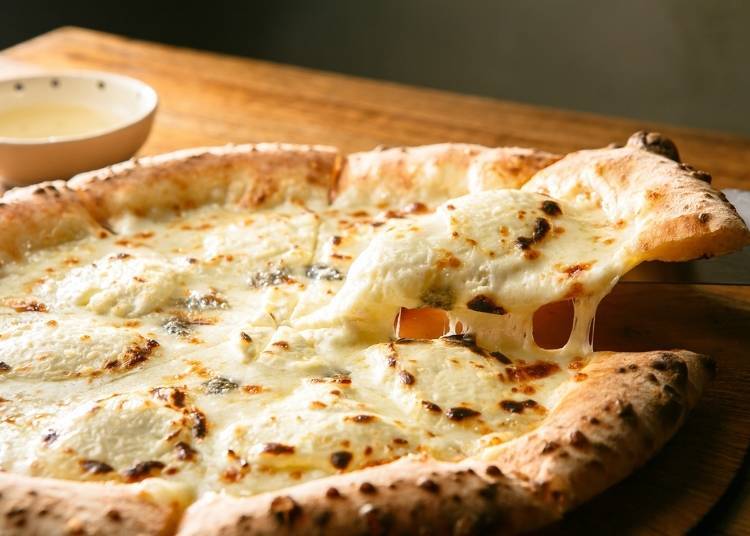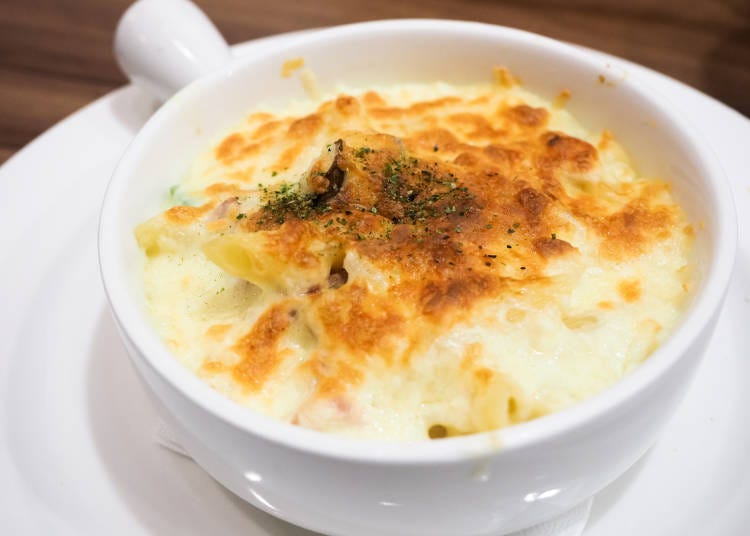
You are bound to see Italian restaurants when you walk around the streets. More people eat Italian than Japanese food! It has become an essential cuisine that many Japanese cannot do without. So, what would an Italian from Italy think if he went to an Italian restaurant in Japan? Would he find many things strange?
Mr. P is an Italian who has been in Japan for two years, so we asked him to tell us about what he found shocking in Japanese Italian restaurants.
“Panini”? For only one? That is strange!

First of all, take the word panini that is commonly used in Japan. Actually, that word is strange but used everywhere.
“In Italian singular nouns end with ‘o’ and plural ones end with ‘i’. So, “panini” is the plural form and “panino” is the singular. It always feels strange when I hear someone order ‘one panini’!”
One panini even at convenience stores seems natural... I wonder if the day will come when it will be called panino.
“Quattro formaggio”?? That sounds like it might be wrong.

Just as for the same reasons regarding panini, Italian menus also probably get this wrong.
“Pizza with four types of cheese. Sometimes I see it on some restaurant menus as “Quattro Formaggio”. The “o” at the end indicates singular, so the correct spelling is “Quattro Formaggi”. It’s considered to be one thing even though there are four types? It’s a bit confusing,” he said, laughing.
In doing some research we noticed that a famous supermarket, which shall go unnamed, advertised one of its standard sweets as “Quattro Formaggio”. One letter can certainly make a difference. Whether there is an “o” at the end of the word or not completely changes the meaning.
So, it’s probably “Grattsi” and not Gratche!

Grazie means “thank you” in Italian. Shop clerks in Japan often say, “Gratche”. But in Italy no one would understand that.
“The correct pronunciation is ‘gratsie.' Nobody says ‘gratche’. The first time I heard it I had no idea what the person was saying, but after hearing it repeated a few times, I finally understood and laughed out loud.”
Not being able to pronounce words so that their meaning can be understood can result in an expression of gratitude not being conveyed, so one needs to take care.
What is “doria”? I never ate that in Italy.

Finally Mr. P told us about “doria” which is a standard item on so many Italian menus in Japan.
“There is no dish called ‘doria’ in Italy. So when I saw it listed as a standard menu item in Italian restaurants in Japan, I was surprised and wondered what it was. Still, when I ate it I thought it was delicious and now it is one of my favorites. I think it would even be popular in Italy!”
It would be a mistake to think that there is doria in Italy because it was a dish created in the 1930s at the Hotel New Grand in Yokohama and is entirely a Japanese creation. I was relieved because Mr. P, the Italian, accepted it without getting his dander up.
“I often go to Italian restaurants in Japan so I think it’s kind to point these things out,” Mr. P said. The use of the Italian language might be a little off, but there is no mistaking that the cooking is as good as it is Italy! I hope everyone will enjoy Italian cuisine in Japan!
- Area
- Category
*Prices and options mentioned are subject to change.
*Unless stated otherwise, all prices include tax.
Popular Tours & Activitiess
Recommended places for you
-

Simply Oishii Wagashi School Discover Japanese Culture Through Wagashi: A Hands-On Experience!
by: Guest Contributor
-

Enjoy Japan's Gorgeous Winter Lights! Ride the Romancecar to Shonan no Hoseki Illumination
by: Guest Contributor
-

Tokyo City Pass Upgrade: Harry Potter Studio Tour & Top Sights up to 85% Off
by: Guest Contributor
-

A Travel Game Changer! Go Hands-Free Between Tokyo and Kyoto with LUGGAGE EXPRESS by JTB and JR Tokai
by: Guest Contributor
-

Keisei × Keikyu 16-Temple Goshuin Tour: Discover Deeper Tokyo & Yokohama
by: Guest Contributor
-

[Extended Offer!](12% OFF KKday Coupon) Mt. Fuji Autumn Leaves, Powder Snow & More! 15 Best Tours to Experience Japan in Fall & Winter
Inspiration for Accommodations
-

Enjoy Mt. Fuji from the Comfort of Your Room! Recommended Ryokan with Mt. Fuji View
-

Stay Near the Cherry Blossoms! Hotels for Cherry Blossom Viewing in Tokyo
-

Family-Friendly Hotels with Free Shuttle to Disneyland: Convenient Access for a Magical Stay
-

Top Ranked Hakone Hotels with Mt. Fuji View: Enjoy Stunning Scenery from Your Private Space
-

Convenient Tokyo Hotels with Airport Shuttle: Ideal for Families and Heavy Luggage
-

Stunning Tokyo Tower View Hotels: Enjoy Spectacular Scenery from Your Private Space
-

Convenient Asakusa Hotels with Kitchens: Ideal for Extended Family Visits
-

Experience Luxury: Hakone's 10 Best Five-Star Accommodations
-

Enjoy Mt. Fuji Autumn Leaves! Top Hotels Near the Popular Autumn Leaves Corridor
-

Experience Hakone Fall Foliage from Your Room with Stunning Views
-

Shibuya Crossing: Getting the Best View from the Deck at Magnet by Shibuya109!
-

'Charming Chaos' - 5 Things That Surprised Foreign Visitors About Tokyo's Akihabara
by: Yuu Sato
-

Tokyo Train Map: Your Essential Guide to Subways and Railways
-

'Is This Really Italian?!' Crazy Things About Japanese Food That Shocked an Italian Traveler
-

'Too Strict!' 7 Things That Shocked a French Tourist When Visiting Japan
-

Complete Guide to Buying Japanese Medicine in Japan: Phrases and Vocabulary You Need to Know
- #best ramen tokyo
- #what to buy in ameyoko
- #what to bring to japan
- #new years in tokyo
- #best izakaya shinjuku
- #things to do tokyo
- #japanese nail trends
- #what to do in odaiba
- #onsen tattoo friendly tokyo
- #daiso
- #best sushi ginza
- #japanese convenience store snacks
- #best yakiniku shibuya
- #japanese fashion culture
- #best japanese soft drinks



















